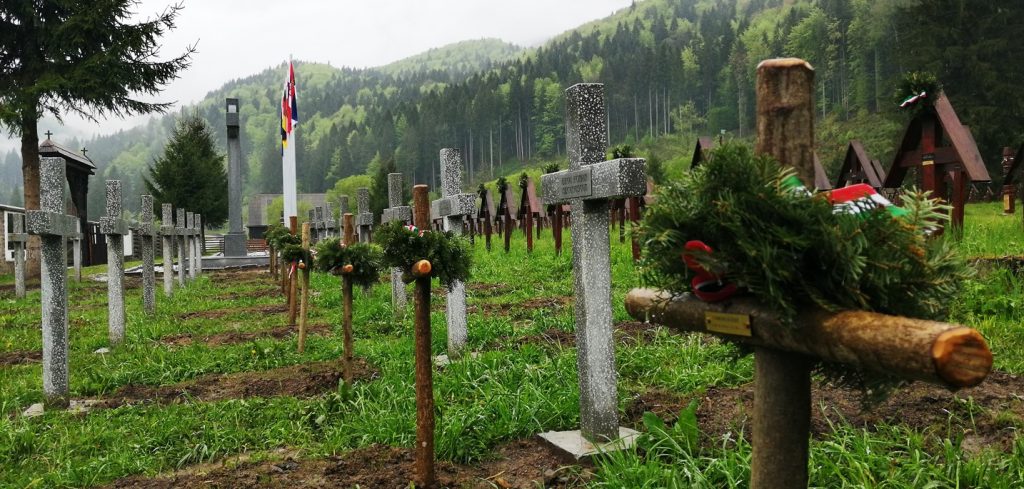Marosvásárhely/Târgu Mureș Court of Appeals made its legally binding decision on Tuesday that the Úz Valley military graveyard belongs to Csíkszentmárton (Sânmartin Ciuc); therefore, the erection by residents of Dormánfalva (Dărmănești) of concrete crosses in the cemetery last year was illegal.

Dormánfalva brought an action in Hargita (Harghita) County Court last fall in order to oblige Csíkszentmárton to withdraw its 2007 regulation in which the Szekler village placed the cemetery, and the nearby barracks built by the Hungarian State during WWII, under its ownership. Three years later, government decree No. 299 of 2010 has finally also affirmed this.
During the suit, Dormánfalva argued that the cemetery had already been mentioned as part of the private property of Dormánfalva back in 1990. But on the other hand, representatives of Csíkszentmárton had land registries dating back more than 100 years that showed the area belongs to them.
This spring, the Hargita County Court rejected Dormánfalva’s request at first intense, which was now reinforced on Tuesday by the Marosvásárhely Court of Appeals as well, thus becoming legally binding.
With this decision, it not only became clear that both the military graveyard and the barracks belong to Csíkszentmárton, but also that the erection of the concrete crosses last autumn, with the approval of Dormánfalva, was illegal.
Inevitable decision
According to attorney Kinga Schulleri, who represented Csíkszentmárton in the lawsuit, after winning this case, the other pending lawsuits can be won, too. For example, she thinks that the case in which Csíkszentmárton has asked to invalidate Dormánfalva’s land registration can now be won automatically, as should be another case aiming to invalidate the building permit issued by Dormánfalva for the concrete crosses; as the town does not own the land, it did not have the right to issue this permit.
Answering a question from szekelyhon.ro, the attorney affirmed that any court decisions theoretically contradicting this one cannot be made in the future.
Title image: Úz Valley military graveyard on May 15, 2019. Wooden crosses on the graves of Hungarian soldiers in the foreground and the illegally placed concrete crosses of the “unknown Romanian soldiers” close to the fence. (Photo: Attila Szoó)